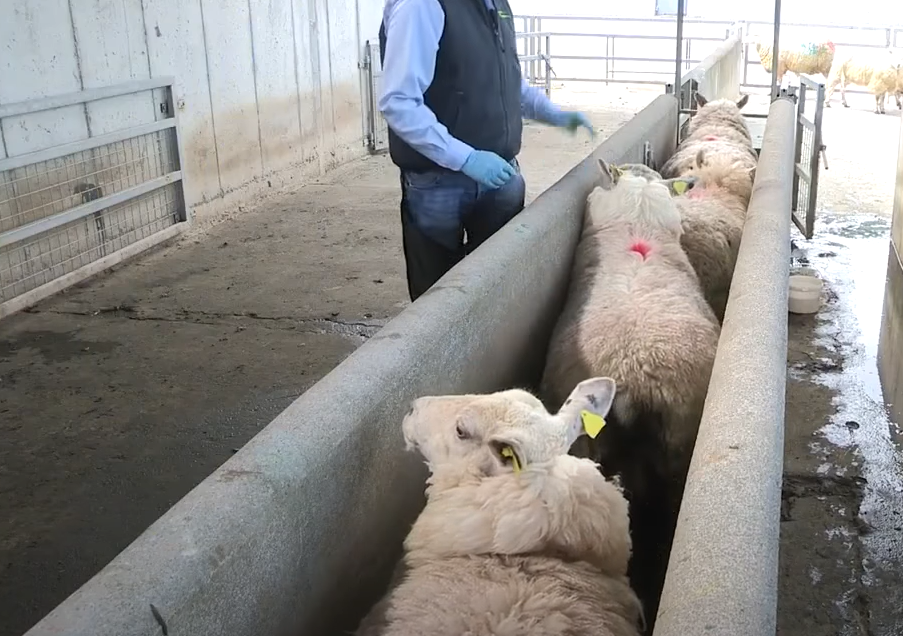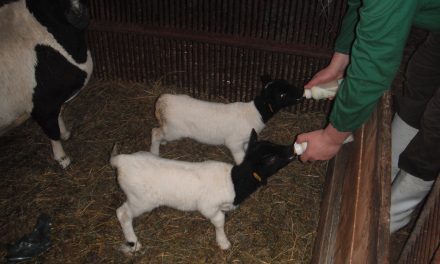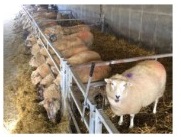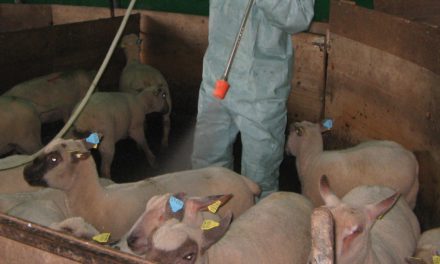This post is also available in:
![]()
![]()
![]()
![]()
![]()
Controlling lameness
Solution name: Controlling lameness
Aim: To control lameness to improve flock welfare and profitability
Description:
-
- Lameness is a common cause of welfare and economic concerns in many flocks
- Chronic lameness reduces ewe and lamb performance
- The main causes of lameness are interdigital dermatitis (scald), footrot and contagious ovine digital dermatitis (CODD)
- It is important to correctly identify the cause of lameness, quantify how much of the flock is affected and set a target reduction level for your farm
How to implement:
The 5 key points in controlling lameness are
- Treat – essential to correctly identify and quantify the cause and treat accordingly. Routine foot paring is not advised.
- Separate lame sheep from the flock to prevent infection of healthy sheep.
- Cull persistent offenders. Records and identification marks are important to identify repeat offenders and don’t keep offspring from persistently lame ewes. In a recent Irish study, the direct heritability of lameness ranged from 0.06 (ewes) to 0.12 (lambs) and showed exploitable genetic variance, so could be beneficial to breeding programmes.
- Quarantine all incoming sheep for 4 weeks to avoid the potential introduction of a new cause of lameness. Sheep should be examined thoroughly while in quarantine. Lame sheep should never be added to the flock.
- Vaccinate for footrot if persistent issue effecting a considerable proportion of the flock and to help reduce antibiotic use on farm.
Treatments:
Footbathing:
- For scald and footrot footbath in either a:
- 10% zinc sulphate solution
- Stand sheep for 3-4 minutes to ensure good contact with the solution.
- A surfactant (e.g. washing up liquid) can be added to improve the penetration of the chemical.
- Zinc sulphate remains active in the presence of organic matter, therefore can be reused.
- 3% formalin solution
- Walk the sheep slowly walked through the footbath.
- Good ventilation is required and correct personal protection equipment (PPE).
- As formalin is denatured by organic material footbath solution needs to be changed when contaminated by mud or faeces.
- 10% zinc sulphate solution
- After foot bathing, sheep should stand in a dry clean area (e.g. concrete, gravel) for at least 30 minutes, so the solution can dry into the feet.
- If possible, put sheep on pasture that has been free from sheep for 12 days.
- Footbathing can be repeated every 5 days until the issue is resolved.
Other treatments:
- Scald can also be treated using oxytetracycline aerosol spray.
- Severe footrot can be treated by spraying with antibiotic aerosol spray and if necessary using a long acting antibiotic injection prescribed by your veterinarian, the hoof may also require paring.
- CODD – correctly identify and treat using prescribed antibiotics under veterinary supervision, it is highly contagious, and thus effected sheep should be isolated until fully cured.
Topic: Health
Production: Dairy / Meat
Animal Category: Adult / Lamb / Replacement
Issue: Precise solutions for different causes of lameness
Level of Solution: Knowledge, Practical
Country: Ireland

Expected benefits
Expected benefits: Improvement in animal welfare and reduction in economic losses associated with lameness (body weight gain, body condition score, age at drafting for slaughter fertility etc.)
Cost Benefit analysis
An increase in footbathing reduces lameness and antibiotic use in the flock and thus improves animal welfare and performance.
Sustainability analysis
Reducing lameness improves feed and grazing efficiency as the animals have an improved growth rate and are slaughtered earlier. Greenhouse gas emissions per kg of carcass is reduced due to improved animal performance. Slight increase in effluents production and water use due to disposal of footbath solution.
A reduction in flock lameness improves animal welfare, creates a better work environment and reduces physical labour, all of which has a positive effect on farmer image.
Prerequisites and/or limits (knowledge, training, capabilities, cost, management, facilities, equipment, etc.)
- Need to be able to identify the cause of lameness and correct treatment.
- A footbath is required if treating large numbers of animals.
- Good sheep handling facilities required especially if using a footbath.
- A dry clean area/yard (concrete/gravel) is required to stand sheep after footbathing.







